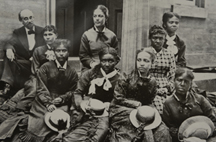| |

Home
|
|
| |
An Introduction to the
Books of the 20th Century Exhibition
|
|
| |
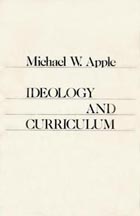 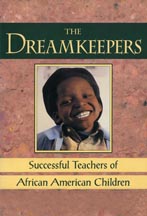 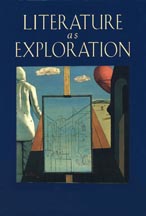 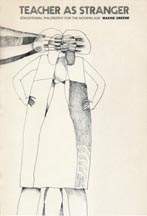
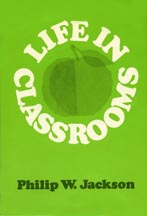 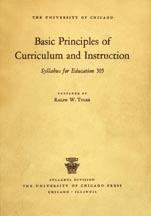 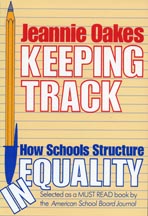 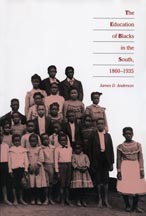
|
|
| |
Introduction to the Books of the 20th Century Exhibition
(adapted from the Museum’s 1999 Books of the Century Catalog)
By Craig Kridel
The things in civilization we most prize are not of ourselves. They exist by grace of the doings and sufferings of the continuous human community in which we are a link. Ours is the responsibility of conserving, transmitting, rectifying, and expanding the heritage of values we have received that those who come after us may receive it more solid and secure, more widely accessible and more generously shared than we have received it.
––John Dewey (1934, p. 87)
All who enter the Museum of Education’s pass beneath this quotation, a statement that embodies and defines our hopes for the Books of the 20th Century Exhibition. This exhibition is best seen not as a conventional listing of education books but, instead, as representing a leisurely walk––a stroll––through the museum. As we pass from the first exhibit dated 1901 to the last dated 1999, we are presented with some of the significant features that warrant each one’s place on the Books of the 20th Century list. We allocate space in the museum’s exhibition area for photographs, documents, and artifacts that situate each book in its larger conceptual role in the history of American education. Our goal is twofold: first, to foster interest and some understanding of the books themselves and their place in history; secondly, to offer the reader some sense of the critical role a museum might play in the long-range development and study of education as a field of inquiry.
Insofar as possible, we want the books to speak for themselves through selected excerpts rather than through our interpretations of what they mean. Each entry strives to be more than “an introduction” since we realize that many of the titles are well known. Some books permit the visitor to reflect and reminisce; they truly need no introduction. Yet, other selections will be fresh and unknown to the neophyte; for these visitors this collection will serve as an invitation. Perhaps we could best view this catalog as an “exergue,” a form explicated by Jacques Derrida in Archive Fever. “According to a proven convention, the exergue plays with citation. To cite before beginning is to give the tone through the resonance of a few words, the meaning or form of which ought to set the stage” (1996, p. 7). Our exhibits “play with citation” and seeks to amplify their resonance. In a very deliberate manner, we set a stage for reading these works. This we have done through our collage presentations that have been exhibited at the Museum of Education and, slowly, installed on the web.
In one sense, I serve as host (in my role as curator, editor, and arrayer of this collection) and welcome all who love books. This is not, however, a project for those who wish to read summaries of books. Nor are these scholarly treatments, critiques, or grand theories of education. Our leisurely walk will result, I hope, with visitors reading the works in their original, unabridged form. Clearly, our Readers’ Guide to Education Exhibition is less celebration and more exploration. We welcome you to examine what we have construed as some of the more important education books of the 20th century.
Museums, Archives, and a Museum of Education
Nothing is less reliable, nothing is less clear today than the word “archive.”
––Jacques Derrida (1996, p. 90)
I receive many questions about the nature of a museum and archives of education. The query is often not a benign interrogative statement; typically, it is a sarcastic comment: “What on earth is in a museum of education?” An applied social science such as education does not commonly see the need for historical preservation. This view is even voiced in the humanities:
I do not disparage archives. I simply groan when I see one. Those great cluttered masses of papers. . . . Who is to say what should be kept and what shouldn’t? I remember finding a fur neckpiece in a box that contained letters of Henry James in the Library of Congress. . . . It told me merely that the lady who had received the letters got her archives mixed with her wardrobe. Yet perhaps that mangy little fur had its place. . . . No, we must allow papers to accumulate in a laissez-faire spirit. . . . Our concern is how to deal with this clutter. (Edel, 1981, p. 24)
And that has been my quest––dealing with clutter while adhering to Dewey’s legacy of “conserving, transmitting, rectifying, and expanding the heritage of values.” In so doing, I have developed a space––a place, intellectually and physically––where captivating ideas can “linger,” where these ideas manifest themselves in forms that can be stored, conserved, displayed, and discussed. I have sought to create a place where people can visit and wonder about ideas––in essence, to engage in intellectual adventures. And in a field such as education where influence is so hard to determine, I saw the uniqueness of visiting a place where important ideas linger in very tangible ways––as linear feet of documents, as objects and artifacts, as video and audio recordings, and as photographs, keepsakes, and diaries.
Because these ideas hover, manifesting themselves at different times in one’s experience, we can never really know what boxes and documents are the truly special ones. Significance today may be pointless for us tomorrow, and that mundane, little memo of today could alter our thoughts about education tomorrow. Such is the singular adventure of museums and archives and their changing role. “Clearly, museums are no longer object-based institutions in the traditional sense of the term–except insofar as objects serve as the conveyers of ulterior ideas and experiences. Rather, they are idea- experience-, and narrative-based institutions––forums for the negotiation and the renegotiation of meaning” (Roberts, 1997, p. 147). This perspective establishes context as we construct roles for museums and archives in today’s educational setting. Our efforts seek to negotiate meaning and, even more importantly, to play with Dewey’s expansive and reflective idea of the nature of experience––albeit, even in leafing through a catalog instead of strolling through the exhibitions themselves. And our intent for this project remains true–to foster interest and understanding of these special books and the delights of reading.
We wish, however, neither to prescribe books nor, as Joseph Epstein admonishes, to give advice:
Unfortunately, giving people advice about what they ought to read invariably makes the person giving the advice sound stuffy . . . Clifton Fadiman . . . sounds the dread note of stuffiness when extolling the virtues of reading the most serious books: “they can be a major experience, a source of continuous internal growth . . . once part of you, they work in and on and with you until you die.” He is talking about books, I know, yet what he is describing sounds curiously like fungus. Once you start talking about the delights of reading, funny things happen. (Epstein, 1987, p. 42)
Funny things do happen when discussing the delights of books, museums, and archives and, now, we turn to our Books of the 20th Century readings.
Readers’ Guide to Education, Book Lists, and the Commonality of Ideas
To quote a nonacademic yet delightful publication, The 100 Greatest Movies of All Time, “Lists are silly. There, we said it. You know it, we know it, and you’re still flipping through this book, . . . because making lists––and arguing over them––is some kind of fundamental, genetically encoded human itch” (Bonventre, 1999, p. 6). Yet, lists elicit many different responses, most often resulting in cries of objection concerning not what is listed but, instead, what has been left off. There are notable exceptions, of course, as acknowledged in Fifty Works of English and American Literature We Could Do Without (Brophy, et. al., 1967) and the Intercollegiate Review’s “The Fifty Worst Books of the Century” (1999).
Such objections to lists are now commonplace. The public wonders how writings by John Updike could be left off Random House’s “100 best novels of the century written in English” and why so few women failed to be listed among the American novelists (only eight, and Toni Morrison is not among them); how The Big Sleep, Cabaret, The Color Purple, and The General were excluded from the American Film Institute’s “100 American movies of all time”; or why James Cameron declaring himself “King of the World” is merely second on The New York Times’ “100 least significant news stories of the century.” The selected items become somewhat secondary to the act of listing and, of course, attention is directed toward the nature of the decisions and the criteria used in choosing those exalted few.
Lists of noteworthy books are perhaps the most commonplace. Some academicians identify a lifetime reading plan without waiting for the end of a decade or century. Be it Clifton Fadiman, Thomas Jefferson, the Harvard Five-Foot Bookshelf, Encyclopedia Britannica, or E.D. Hirsch Jr., we are intrigued by the selections yet vigilant and always ready to rally forces to battle for the neglected, overlooked, or maligned. As the editorial staff of the Library Journal notes (stemming from an examination of Random House’s 100 best novels):
We set off on righteous rants. . . . We railed against perfidious picks, egregious omissions, statistical evidence of prejudice. . . . We guffawed at the preponderance of books by dead white males. . . . Some disagreements would not be reconciled and will have certain editors looking askance at each other for months to come. But more important than any list is the reminder that literature inspires a deep passion in people. (1998, p. 147 ) Books offered a way to build community, to suggest the beginnings and possibilities of shared experience.
Books of the 20th Century Education Project
By suggesting that they possessed “Great Objects” of “Great Value” that represent “Great Traditions,” museums have traditionally presented their collections according to the Great Books prescription. In so doing, they have privileged a particular mode of knowledge, particular methods and criteria for acquiring it, and a particular class of professional curators and directors who author––and authorize––it.
––Lisa Roberts (1997, p. 60)
By inaugurating a 20th century book exhibition, I wished not to generate a “great books” roster for the field of education nor to canonize a definitive array of books that every education professor and student should know. Fear of a great books/who’s who list served to deter initial efforts as well as the participation, I suspect, of certain scholars whose involvement I sought as members of a selection panel. Yet, I wanted to explore what publications defined our field and, in so doing, examine those books that have shaped (for good or bad) our values in education. We are inspired by Dewey’s closing statement in A Common Faith, “Ours is the responsibility of conserving, transmitting, rectifying, and expanding the heritage of values” (1934, p. 87). Museums conserve and transmit; I sought to rectify and expand “Books of the Century” and “readers’ guides” by underscoring not only acclaimed and popular works but, also, those books that have proven significant and insightful without achieving widespread recognition.
From the outset, I was inspired by the positive reception to The New York Public Library’s Books of the Century which grew out of the library’s exhibition celebrating its centennial. Displaying works selected to “recall this past century and its tremendous changes . . . [Books of the Century] drew on the enthusiasm and love of books . . . of the institution’s librarians” (Diefendorf, 1996, p. 2). Similarly, our exhibition, stemming from a love of books, provides an opportunity to generate discourse, controversy, and reflection about education writings, the type of dialogue that is mostly absent in our field.
Selection Criteria
As the Museum of Education selection panel began discussing the project, we realized we could not be objective––nor would we try. Elizabeth Diefendorf of The New York Public Library reached the same conclusion:
All of us who worked on Books of the Century understand that any such compilation, no matter how ambitious, can only be “Some Books of the Century,” as one visitor commented. Our choices, though certainly diverse, represent a perspective that is urban, American, and profoundly concerned with issues of social justice and freedom of expression. And ultimately there are many other books we might have included. (Diefendorf, 1996, p. 7)
Their list of 159 works in 11 categories is much more comprehensive than our selections from one category. And while there are, of course, many other books we might have added, our picks represent a perspective that is similarly academic, American, and profoundly concerned with school experimentation and educational change.
“To list is to exclude,” and we knew we would insult many by not including certain beloved works. Initially, our list grew to well over 300 books. Practical realities––research and design/framing staff time, exhibition space, scheduling, and budgets––demanded focus. Ultimately, nominations were narrowed during subsequent conversations with selection panelists. This process clarified for us the value of our project: to initiate discussions about texts “for the love of books” rather than to dispute the injustices of selections.
While we enjoyed reminiscing about our favorite books, we adjourned with 83 exhibits. John Updike, when referring to his 55 selections for The Best American Short Stories of the Century, notes “A fathomless ocean of rejection and exclusion surrounds this brave little flotilla, the best of the best” (1999, p. xv). Our flotilla will, we hope, provide a gateway to your discovering works that were not included. Doubtless, our criteria will be questioned, as they should. Ultimately, we worked within four principles for inclusion.
First, we followed The New York Public Library’s lead by deciding that an author could be represented by only one title, a decree that proved futile as we sought to select a work by Dewey. One selection per author was allowed with apologies to our review panel and with regrets to some of our more prolific writers.
Second, we favored books that addressed the academic field of elementary and secondary education rather than the more practical dimension of schooling. Thus, elementary and secondary schoolbooks, as well as most college textbooks, while dramatically swaying school practice, have not been included. We also excluded what would easily have expanded the exhibition fourfold: influential works from outside the field of education. We wished not to become embroiled in border wars––what truly represents (or separates) the fields of education and psychology; or whether, for example, Carol Gilligan’s In a Different Voice, Richard Rodriguez’s Hunger of Memory or Gunnar Myrdal’s An American Dilemma: The Negro Problem and Modern Democracy should be considered education books––but we eventually excluded works that were written by individuals from outside the field of education, books by countless important authors: Arendt, Derrida, Erickson, Foucault, Habermas, Maslow, Mead, Piaget, Rogers, Skinner, Veblen, and Vygotsky, as well as Thomas S. Kuhn’s Structure of Scientific Revolutions (appearing 69th on The Modern Library’s list of “100 Best Nonfiction books written in English and published in the twentieth century”). Despite this pronouncement, however, we exhibited works by journalist Charles Silberman and economists Samuel Bowles and Herbert Gintis.
Third, we stayed within the publication date of the 20th century and focused on North American (primarily United States) educators. This served to exclude Paulo Freire’s Pedagogy of the Oppressed and writings of Maria Montessori, A.S. Neill, and many others. Well into the selection process, we read Updike’s second rule in his selection of short stories of the century: “enforcing the reflection of an American reality, was to exclude any story that did not take place on this continent or deal with characters from the United States or Anglophone Canada” (1999, p. xvi). Under different circumstances, we would take issue with his position; yet, after attempting to balance our own selections within a global context, we realized the hopelessness of such efforts.
And fourth, we asked our selection panelists (35 members from throughout the United States) to identify education books that “had a significant influence, consequence, or resonance” on American education during the 20th century. Books were identified that advanced the history of ideas related to the field of elementary and secondary education, broadly conceived. As such, we have included certain important, yet unacknowledged, publications. In short, works were selected that exerted, or should have exerted, a profound influence, consequence, or resonance upon the field of American education.
Also, we sought to acknowledge commonsensible criteria: is the book intrinsically interesting, memorable, and rereadable? These criteria were sometimes ignored, however. Certain selections were not particularly interesting, memorable, or rereadable; yet, they exerted profound influence upon the field. Some entries were justified by their seminal role in the history of ideas. Others were justified by that infuriating and all-too-common rationale, “They’re good for the reader.” Moreover, some selections were included owing to their overpowering popularity; yet, if an opportunity arose, the interest of a book (could it be reread and still provide sustenance) was more admired than fame. Such were the problems of selection; such are our sins of omission.
Selection Exceptions, Oddities, and Irregularities
Our Books of the 20th Century, with all selections between 1900 and 1999, is seemingly little different from many of the lists of the best books that “stood the test of time.” We wished to highlight certain overlooked books as much as to celebrated the well-known, and we saw little merit in featuring recently published books. As we engaged in the challenging process of discerning importance, we often found ourselves in a dilemma. We noticed that our list was becoming overpopulated with white, male authors. To represent the past with a sense of gender equity is “a state devoutly wished.” As one of our reviewers responded: “I am pained to see the list comprised of primarily white men's books.” We, too, are pained. We never expected, however, a list to represent an even distribution among minority/gender lines. Actually, we were uncertain what to expect since impact and significance were aspects of our criteria, and these ephemeral constructs become defined within their own times. Yet, other than adopting a vigil to recognize important writings by minority/women authors, we had no sense of what would be an appropriate representation. In order to provide some context, we tabulated the number of minority/women authors in the field of curriculum, an area not as gender defined as male-dominated educational administration or female-oriented elementary education. William Schubert’s Curriculum Books (1980) identifies books in the field of curriculum from 1900 to 1980 and, much to our surprise, only 4 percent of the publications were written by women. The percentage dropped as we determined books-by-women-authors published between 1950-1980. Such statistical outcomes are not encouraging; yet, this made our Books of the 20th Century education project representation of approximately 33 percent by minority/women authors a bit more palatable.
Our Reflections and Selections; Your Interpretation and Interactions
In the introduction to Books of the Century, Charles McGrath describes the 99 bound volumes of The New York Times Book Review as “a chastening and depressing catalogue of once-famous books and authors now utterly forgotten” (1998, p. xxi). At times, we fear the same description might be advanced for this project. As you examine the exhibition listing, some selections may stump and confuse––few educators will recognize the names Willard W. Waller, Caroline B. Zachry, or Laura Zirbes. This was evidenced when we presented in-process selections to the academic community at various conferences.
I will view our efforts as worthwhile and not “chastening and depressing” if you find yourself perusing any of the selections in awe of the new or with a pleasant sense of recognition. Moreover, our act of selection––a form of curatorial knowledge and interpretation––represents efforts to entice you into the realm of discourse and interaction. “[T]he task of interpretation [is] first and foremost a task of connection: getting visitors to connect to what they see, on whatever terms that might be. At issue was the legitimization of personal experience as a source of meaning different from but no less valid than curatorial knowledge. Advocates of this view began experimenting with interpretation that encouraged visitors to look inside themselves” (Roberts, 1997, p. 70). We wish to draw you into the discussion of the world of books and to engage in such interpretation. What are some of the more important books of the past fifteen years? What are the more important works of the past 50 years? From such discourse, the awe and wonderment of the past and present emerge through those books we hold dear.
Reading, Critiquing, and Documenting “Classics”
A classic is a book which with each rereading offers as much of a sense of discovery as the first reading. ––Italo Calvino (1999, p. 5)
Many collections of “the best” are based on ratings systems whereby authorities submit opinions that are subsequently tabulated and adopt a tone of scientific objectivity. Other collections are an homage to the love of reading, best represented in For the Love of Books: 115 Celebrated Writers on the Books They Love Most (Shwartz, 1999) and Anne Fadiman’s Ex Libris: Confessions of a Common Reader (1998) where the selections prove personal and idiosyncratic. I wonder why not more writing of this type exists in our field? Many narratives describe teachers’ classroom interactions with students. Where is the work that discusses our interactions with ideas? Such curiosity, exploration, and adventure in the examination of education books is often missing; yet, cannot we hope for discussion and reflection about those books that serve to inspire and guide our thoughts about this loosely conceived field called education? With this, I return to our larger, more specialized mission at the Museum of Education.
We do not necessarily view the selected Books of the 20th Century selections as classics. But we have displayed an array of rather remarkable books. And while I find the term “classic” somewhat objectionable, the recently released collection of essays by Italo Calvino, Why Read the Classics?, takes great delight in enumerating the numerous reasons––in fourteen definitions––why we should read the classics. One definition is quite compelling:
A classic is a work which constantly generates a pulviscular cloud of critical discourse around it, but which always shakes the particles off. A classic does not necessarily teach us something that we did not know already; sometimes we discover in a classic something which we had always known (or had always thought we knew) but did not realize that the classic text had said it first (or that the idea was connected with that text in a particular way). And this discovery is also a very gratifying surprise, as is always the case when we learn the source of an idea, or its connection with a text, or who said it first. (Calvino, 1999, p. 6)
What I bemoan is the lack of “pulviscular clouds of critical discourse” about many of our important education books. I wish not to adopt the term “literary criticism” in its dated use as offering a definitive interpretation of a work; yet, I plead for more critical writing about education books with the obvious assumption that in this day we are involved with multiple interpretations and transactional narratives.
Few of our cries are heeded, alas. The Museum of Education sought to develop a place for biographical research in education (Kridel, 1996, 1998a); achieving this has not been easy. Many colleagues question the role of biography and, for the most part, discredit such research as perpetuating in many respects the rich and powerful. The oppressed tend not to leave papers and artifacts. Those colleagues who dismiss biography as the realm of the privileged are educators who may visit libraries but who do not visit archives. Materials do indeed abound from all segments of life and culture. This fact has been the delight and adventure of those who explore biographical inquiry with a wider concept of material culture. Similarly, there is a place in education for “scholar adventurers” (Altick, 1950) to engage important books in our field––in essence, to work in the role of scholar and critic. Many classics in education are furthered by the interpretive writings of thoughtful readers: Lawrence Cremin’s reflections on Dewey’s Democracy and Education (Cremin, 1965); Philip Jackson thoughts on Dewey’s Art as Experience and Experience and Education (Jackson, 1998a, 1998b); Maxine Greene’s introduction (1998) to Dewey’s How We Think. Such essays enhanced one’s reading of the originals as have those biographies about Dewey (Ryan, 1995; Westbrook, 1991) and earlier critiques of American educators by Boyd Bode (1927), Norman Woelfel (1933), and Merle Curti (1935). In essence, this is the Museum’s plea as we seek to encourage and build an arena for discourse, textual criticism, and exploration of these and many other books.
Moreover, museums do not merely conserve and transmit items from the past. Dewey’s call was to rectify and expand. And this moves the Museum of Education into its role for the “preservation of the present” (Kridel, 1998b) and to adopt an active, generative position towards acquisitions. We do not wait to acquire materials; we actively request the production and generation of archival materials. Thus, we initiated an acquisition program to obtain reflections from authors of the selected books. I am writing to all living authors and requested a statement for the exhibitions as well as the completion of a Museum questionnaire that attended to certain aspects of their careers. I could not be more pleased with their responses. Ironically, a careful reading of these statements certainly redefines one’s perspectives of a classic. While Calvino defines a classic as “those books which constitute a treasured experience for those who have read and loved them; but they remain just as rich an experience for those who reserve the chance to read them for when they are in the best condition to enjoy them” (Calvino, 1999, p. 4), we hear some authors tell tales of woe––numerous rejections, disappointing sales, few citations, miscitations––or we read author’s critiques of their own work, at times more brutal than any book review. Nonetheless, these statements offer rare glimpses into the works as authors continue to reconsider and redefine their ideas.
Finally, the Museum seeks to foster scholarship in the developing area of documentary editing in education, an interest that serves as the academic foundation for this volume. Specifically, the Books of the 20th Century project (formerly the Books of the Century Catalog) is the Museum’s initial effort to prepare an adapted, enumerative bibliography catalog where books, selected accordingly, are presented in a manner that captures the substance and quality of the source texts. In addition, we are producing a photographic––biographical vignette collection of curriculum leaders of the 20th century and, as a third project, we have begun a “voices of the past” collection, an audio collage of speeches by distinguished educators of the early-to-mid 20th century. Such documentary editing work does not fall neatly within the definitions of educational research; however, once again, rules are being made. With this in mind, I now describe our catalog, a somewhat unusual publication for the field of education.
The Nature of an Exhibition Catalog
Through a series of on-site and web exhibitions, our Books of the 20th Century project comes to life. Exhibits often encompass an array of items for each selection: a first-edition copy of the work; photographs of the author(s) as well as related correspondence; an array of book reviews and citations; related works by the author and other artifacts (W.W. Charters’ chair, Margaret Willis’ typewriter, numerous samples of authors’ personal books and marginalia); and other documents related to the selected work. The exhibits constitute much more than a roster of book titles, however; our efforts remain a temporally-limited and spatially-limited series of collage presentations.
This project documents and preserves particular aspects of the exhibitions and, as such, serves to represent efforts of “a bibliographic collager.” Catalog entries, arranged in chronological order, include three components: general comments about the text, excerpted quotations and opening (and, at times, closing) passages from the publication, and bibliographic details and each book’s table of contents. Whenever possible I include reflections by the author(s).
At times, I fall prey, begrudgingly, to basic synopses which, I realize, serve to condense (and constrict) the work. “These capsule comments serve multiple purposes. Often they take the form of wisecracks; sometimes of cheap shots. . . . But more frequently the characteristic note is failed cuteness” (Epstein, 1985, p. 389). Failed cuteness seems to be the fate of many such collections. Comedy, however, is not my aspiration here. Nor is this a memoir of my personal interaction with texts; however, I do recognize that the exhibit panels––published as this catalog text––may prove somewhat idiosyncratic. Most important, this is a catalog of quotes, and the quotes are carefully selected though, by intent and by definition, not “totally” representative of the work. The power of the Readers’ Guide Exhibition rests not with interpretation but with its quoted passages, and selections have been based on their ability to intrigue and to generate curiosity.
“First paragraphs are written on Olympus. Whitehot shoes from the forge, they glow and ring on the anvil as a god batters them into shape” (Newlove, 1992, p. 1). Opening statements especially for books can be quite revealing. To provide some sense of uniformity in the selection of excerpts, I included opening paragraphs for each book (either from the preface or from the opening page) and, when possible, extracted the final statement although some books did not contain what could be construed as a concluding section. I have included the table of contents for those bibliophiles who wish a better sense of topics and for the stress placed on certain themes. Along with this information are bio-bibliography statistics, consisting of the selection’s full title, author’s dates and place of employment at the time of publication, the selection’s page numbers, and book size.
Certain text-panel conventions––actually, research failings––run throughout this catalog. In violation of caveats by the esteemed Richard Altick and Jacques Barzun, I end descriptive paragraphs with quotations. The literary critic does not rely on others’ conclusions; I do because I have not embraced the role of interpreter. My museum colleagues will quibble since, of course, all exhibits involve interpretation. The text, however, adopts collage form, and my textual mosaics draw upon other scholars’ quotations and comments.
I have standardized the table of contents. Roman numerals represent section titles; arabic numbers represent chapter titles. Punctuation conventions within the selected excerpts, however, are not uniform. Perspectives vary among the authors as do capitalization after appositive colons and other matters of style. All excerpts remain true to source texts. I will leave for others future studies of textual collation and the examination of facsimile configurations of book tables and emended text. Also, I standardized our citation format so that a simple page designation indicates the excerpt was selected from the featured book. Finally, entries may seem somewhat redundant if the catalog is read consecutively. I have assumed, however, that most readers, as Bonventre mentioned earlier, will be “flipping through this book.” Each description is written as if it is the reader’s first. I wish to invite exploration, to suggest possibilities, and to display, in some manner, the act of being “in adventurous company.” In essence, our catalogs and exhibits invite visitors to begin a museum experience, to begin the adventure of reading these and other books.
Appreciation to our Books of the 20th Century Exhibition Selection Panelists
Perhaps the kindest form of thanks I may extend to my 35 selection panelists was a general, comprehensive nod and complimentary copies shipped in plain envelopes. Many panelists supported the project while requesting anonymity. Our jury never met as a group. Some received single queries, long telephone calls, and group e-mail posts. I juggled compliments, objections, criticisms, and questions. I sought to include a variety of educators––those who were familiar with the general field of education; those who were versed in educational history and could attend to certain aspects of historical significance; those whose works would certainly be included and who could critique other books from the perspective of a peer; and those educational statespersons who, while not primarily authors and researchers, have involved themselves in the field of education for decades and who have been a “witness to a century” of educational change. I thank them all.
********************
In closing, welcome to our exhibition in web form and within the halls of the Museum of Education, Wardlaw College. Those who have been able to attend our exhibitions, I thank you for your support of this rather odd entity called a museum of education. Our presentations are meant to arouse curiosity, to pique interest, and to encourage visitors to obtain copies and read the works in their original, unabridged form. I hope the experience brings as much pleasure and wonderment to you as it has brought to me.
Bibliography
Altick, R. (1950). The Scholar Adventurers. New York: The Free Press.
Bode, B.H. (1927). Modern Educational Theories. New York: Macmillan Co.
Bonventre, P. (1999). The 100 Greatest Movies of All Time. New York: Entertainment Weekly.
Brophy, B., M. Levey & C. Osborne. (1967). Fifty Works of English and American Literature We Could Do Without. London: Rapp & Carroll.
Calvino, I. (1999). Why Read the Classics? New York: Pantheon.
Cremin, L.A. (1965). The Genius of American Education. New York: Vintage Books.
Curti, M. (1935). The Social Ideas of American Educators. New York: Charles Scribner’s Sons.
Derrida, J. (1996). Archive Fever. Chicago: University of Chicago Press.
Dewey, J. (1934). A Common Faith. New Haven: Yale University Press.
Diefendorf, E. (Ed.) (1996). The New York Public Library Books of the Century. NY: Oxford University Press.
Edel, L. (1981). “The Figure Under the Carpet,” in Telling Lives, edited by M. Pachter. Philadelphia: University of Pennsylvania Press, pp. 16-34.
Epstein, J. (1985). Plausible Prejudices: Essays on American Writing. NY: Norton.
Epstein, J. (1987). Once More Around the Block. New York: Norton.
Greene, M. (1998). “Foreword,” in How We Think by John Dewey. Boston: Houghton Mifflin Co., pp. vii-xviii.
Intercollegiate Review. (1999). “The Fifty Worst Books of the Century,” Intercollegiate Review, Fall, pp. 4-8.
Jackson, P.W. (1998a). “Dewey’s Experience and Education Revisited,” in Experience and Education: The 60th Anniversary Edition. West Lafayette, IN: Kappa Delta Pi.
Jackson, P.W. (1998b). John Dewey and the Lessons of Art. New Haven: Yale University Press
Kridel, C., R.V. Bullough, and P. Shaker. (Eds.) (1996). Teachers and Mentors. New York: Garland.
Kridel, C. (Ed.) (1998a). Writing Educational Biography. New York: Garland.
McGrath, C. (Ed.) (1998). Books of the Century: A Hundred Years of Authors, Ideas and Literature. New York: Times Books.
Newlove, D. (1992). First Paragraphs. New York: Owl Book.
Roberts, L. (1997). From Knowledge to Narrative. Washington: Smithsonian Institution Press.
Ryan, A. (1995). John Dewey and the High Tide of American Liberalism. New York. W. W. Norton.
Schubert, W.H. (1980). Curriculum Books. Lanham, MD: University Press of America.
Shwartz, R. (1999). For the Love of Books. New York: Grossett/Putnam.
Updike, J. (Ed). (1999). The Best American Short Stories of the Century. NY: Houghton Mifflin.
Westbrook, R. (1991). John Dewey and American Democracy. Ithaca: Cornell University Press.
Wilshire, B. (1990). The Moral Collapse of the University. Albany: State University of New York Press.
Woelfel, N. (1933). Molders of the American Mind. New York: Columbia, University Press.
Craig Kridel, editor/arrayer, Books of the Century Catalog (Columbia, SC: Museum of Education, 2000), 141 pp.
|
|
| |
Books of the 20th Century
An introduction to some publications that have shaped the field of education.
Washington, B. T., Up From Slavery (1901)
Du Bois, W. E. B., The Souls of Black Folk (1903)
Dewey, J., How We Think (1910); Democracy and Education (1916); Experience and Education (1938)
Thorndike, E. L., Educational Psychology (1913/1914)
McCall, W. A., How to Measure in Education (1922)
Charters, W. W., Curriculum Construction (1923) and Bobbitt, F., How to Make a Curriculum (1924)
Kilpatrick, W. H., Foundations of Method (1925)
Bagley, W. C., Determinism in Education (1925)
Morrison, H. C., The Practice of Teaching in the Secondary School (1926)
Rugg, H., The Foundations and Technique of Curriculum-Construction (1926/1930)
Counts, G. S., Dare the School Build a New Social Order? (1932)
Waller, W. W., Sociology of Teaching (1932)
Woodson, C. G., The Mis-Education of the Negro (1933)
Curti, M., Social Ideas of American Educators (1935)
Judd, C. H., Education as the Cultivation of the Higher Mental Processes (1936)
Bode, B. H., Democracy as a Way of Life (1937)
Rosenblatt, L. M., Literature as Exploration (1938)
Commission on Secondary School Curriculum, Science in General Education (1938)
Fawcett, H. P., Nature of Proof (1938)
Class of 1938, University High School, Were We Guinea Pigs? (1938) and Willis, M., Guinea Pigs After 20 Years (1961)
Benjamin, H. R. W., The Saber-Tooth Curriculum (1939)
Thayer, V. T., C. B. Zachry, and R. Kotinsky, Reorganizing Secondary Education (1939)
Zachry, C. B., Emotion and Conduct in Adolescence (1940)
Sanchez, G. I., Forgotten People (1940)
Barzun, J., Teacher in America (1945)
Harvard Committee, General Education in a Free Society (1945)
Havighurst, R. J., Developmental Tasks and Education (1948)
Quillen, I. J. and L. A. Hanna, Education for Social Competence (1948)
Tyler, R. W., Basic Principles of Curriculum and Instruction (1949)
Taba, H., Elementary Curriculum in Intergroup Relations (1950)
Bestor, Jr., A. E., Educational Wastelands (1953)
Bloom, B. S., et al., Taxonomy of Educational Objectives: Cognitive (1956), Affective (1964)
Zirbes, L., Spurs to Creative Teaching (1959)
Conant, J. B., American High School Today (1959)
Goodman, P., Growing Up Absurd (1960)
Bruner, J. S., The Process of Education (1960)
Cremin, L. A., Transformation of the School (1961)
Alberty, H. B., and E.J. Alberty Reorganizing the High School Curriculum (1962)
Callahan, R. E., Education and the Cult of Efficiency (1962)
Mager, R. F., Preparing Instructional Objectives (1962)
Krug, E. A., The Shaping of the American High School (1964)
Coleman, J. S., Equality of Educational Opportunity (1966)
Jackson, P. W., Life in Classrooms (1968)
Smith, L. M. and W. Geoffrey, The Complexities of an Urban Classroom (1968)
Silberman, C. E., Crisis in the Classroom (1970)
Sarason, S. B., The Culture of the School/Problem of Change (1971)
Greene, M., Teacher as Stranger (1973)
Dunkin, M. J. and B. J. Biddle, The Study of Teaching (1974)
Tyack, D. B., One Best System (1974)
Lortie, D. C., Schoolteacher (1975)
Pinar, W. F., editor, Curriculum Theorizing (1975)
Bowles, S. and H. Gintis, Schooling in Capitalist America (1976)
Apple, M. W., Ideology and Curriculum (1979)
Eisner, E. W., The Educational Imagination (1979)
Chapman, L. H., Instant Art, Instant Culture (1982)
Cronbach, L., Designing Evaluations of Education and Social Programs (1982)
Gardner, H., Frames of Mind (1983)
Lawrence Lightfoot, S., The Good High School (1983)
Sizer, T. R., Horace’s Compromise (1984)
Goodlad, J. I., A Place Called School (1984)
Oakes, J., Keeping Track (1985)
Kliebard, H., The Struggle for the American Curriculum (1986)
Anderson, J. D., The Education of Blacks in the South (1988)
Giroux, H., Teachers as Intellectuals (1988)
Bullough, R. V., Jr., First Year Teacher (1989)
Rose, M., Lives on the Boundary (1990)
Kozol, J., Savage Inequalities (1991)
Graham, P. A., S.O.S.: Sustain Our Schools (1992)
Nieto, S., Affirming Diversity (1992)
Noddings, N., The Challenge to Care in Schools (1992)
Ayers, W., To Teach (1993)
Denzin, N. and E. Lincoln, Handbook of Qualitative Research (1994)
Ladson-Billings, G., The Dreamkeepers (1994)
Berliner, D. C. and B. J. Biddle, The Manufactured Crisis (1995)
Delpit, L., Other People’s Children (1995)
Meier, D., The Power of Their Ideas (1995)
Tyack, D. and L. Cuban, Tinkering toward Utopia (1995)
AAUW, How Schools Shortchange Girls (1995)
Molnar, A., Giving Kids the Business (1996)
Nord, W. A., Religion and American Education (1996)
Darling-Hammond, L., The Right to Learn (1997)
Lehmann, N., The Big Test (1999)
Valenzuela, A., Substractive Schooling (1999) |
|
|
|
|
|
|
|
